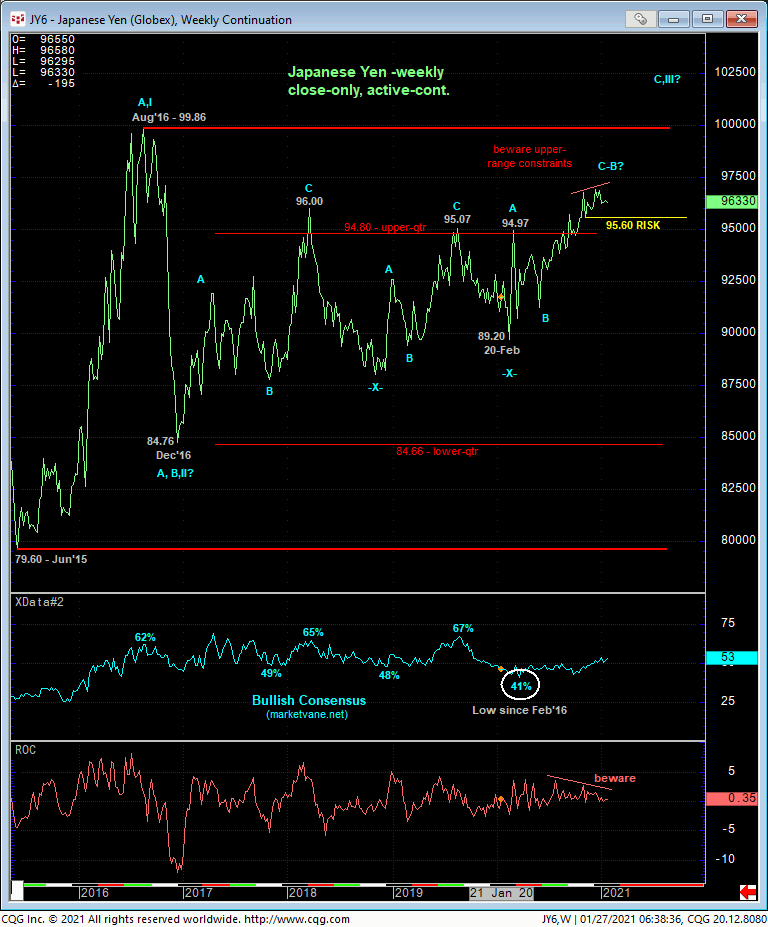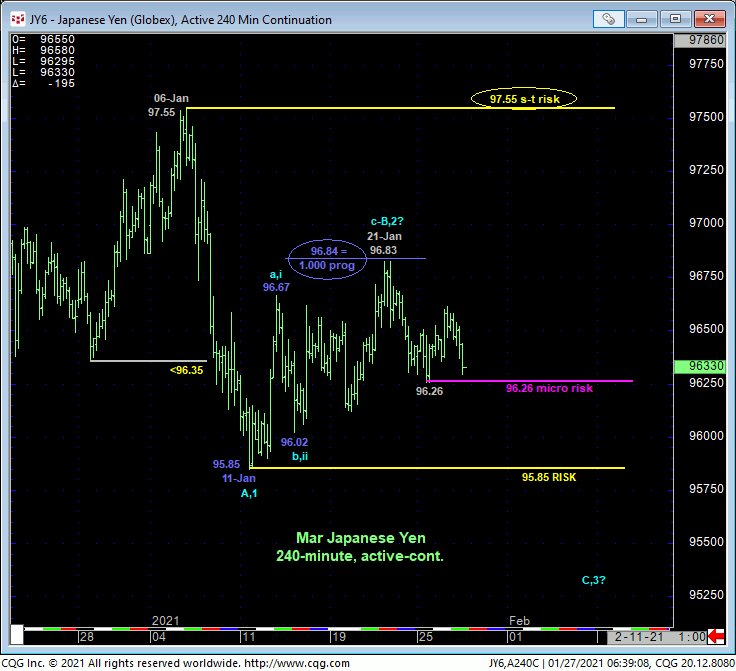
As long-time readers of this blog know, the yen has been one of our least favorite markets to cover since last Apr’20 and even in the prior THREE YEARS due to the insane amount of aimless whipsaw risk from the middle-half bowels of its massive FIVE YEAR lateral range and the labored, 2-steps-up-1-step-down manner in which it has rallied over the past 10 months. But for the reasons discussed below, we believe that at the very least, the risk/reward merits of a bullish policy are increasingly questionable. At best, a favorable risk/reward opportunity from the bear side is developing.
One key peak/correction/reversal threat stems from the simple facts that upside momentum is waning/struggling in the upper-quarter of the 5-year lateral range shown in the weekly close-only chart below. If there’s a time and place and condition to be increasingly leery of downside vulnerability, we believe it is here and now.


Additionally, early-Jan’s sell-off not only confirmed a bearish divergence in daily momentum below 28-Dec’s 96.35 low, marking 06-Jan’s 97.55 high as one of developing importance, the impulsiveness of that 97.55 – 95.85 decline suggests at least the A-Wave of a more protracted correction lower, if not the 1st-Wave of a major reversal. Resumed weakness below 95.85 would render that low an initial counter-trend low and confirm a larger-degree momentum failure that exposes the new longer-term trend as down.
Lastly, the recovery attempt from 11-Jan’s 95.85 low is thus far about as textbook a 3-wave structure as there is. Left unaltered by a recovery above at least last week’s 96.83 high, this 3-wave recovery is considered a B- or 2nd-Wave correction ahead of a (C- or 3rd-Wave) resumption of early-Jan’s downtrend that preceded it. A break below Mon’s 96.26 low will reinforce this count and expose 11-Jan’s 95.85 key low and long-term risk parameter as only remaining threshold the threatening bear would need to break to break the longer-term uptrend and expose further and possibly protracted losses thereafter.
These issues considered, traders are advised to move to a cautious bearish policy and exposure on the immediate break below 96.26 with a recovery above 96.83 thereafter required to negate this specific count and warrant its cover. In lieu of at least such 96.83+ strength and especially following a break below 95.85, further and possibly protracted losses in the weeks and months ahead should not surprise.


